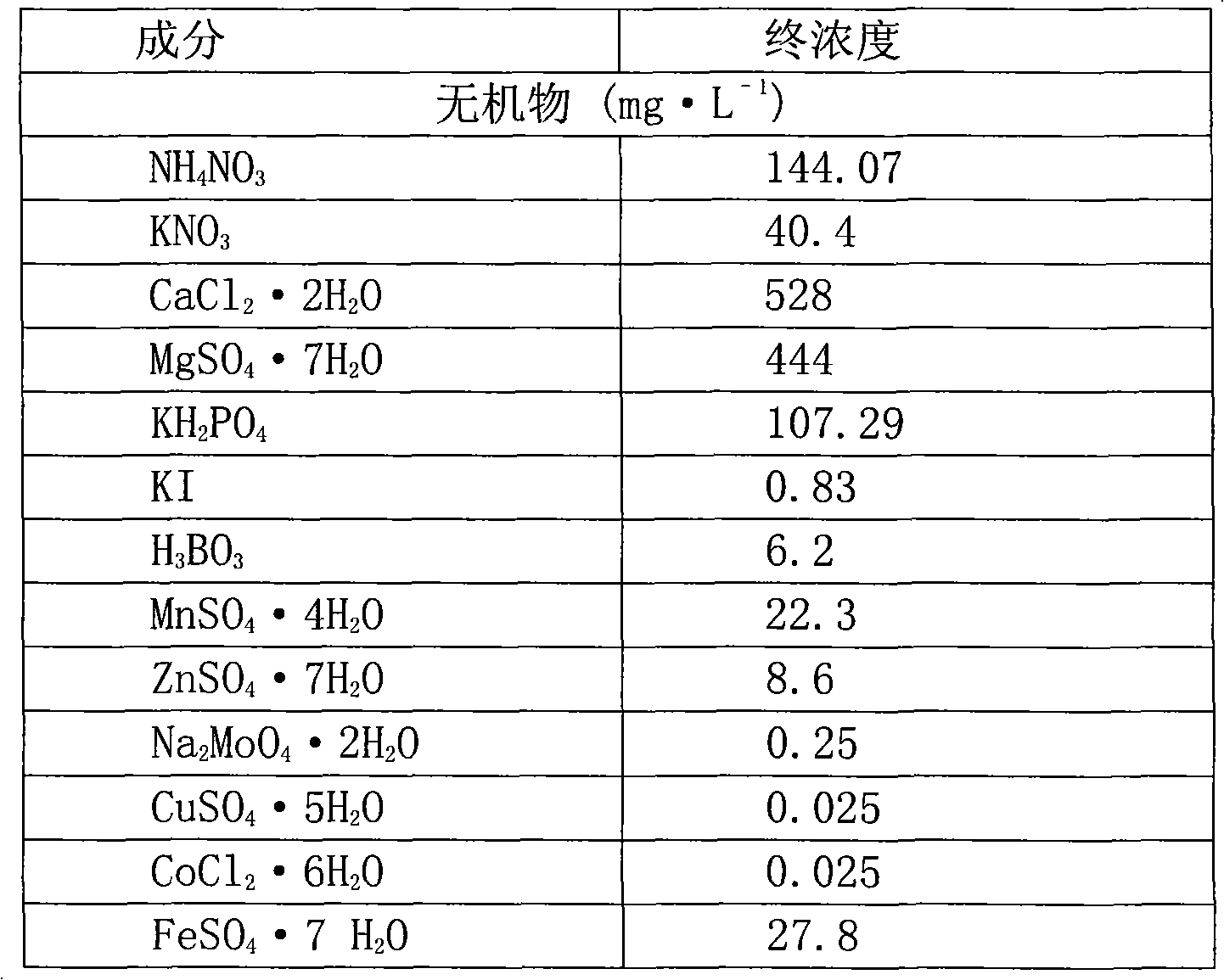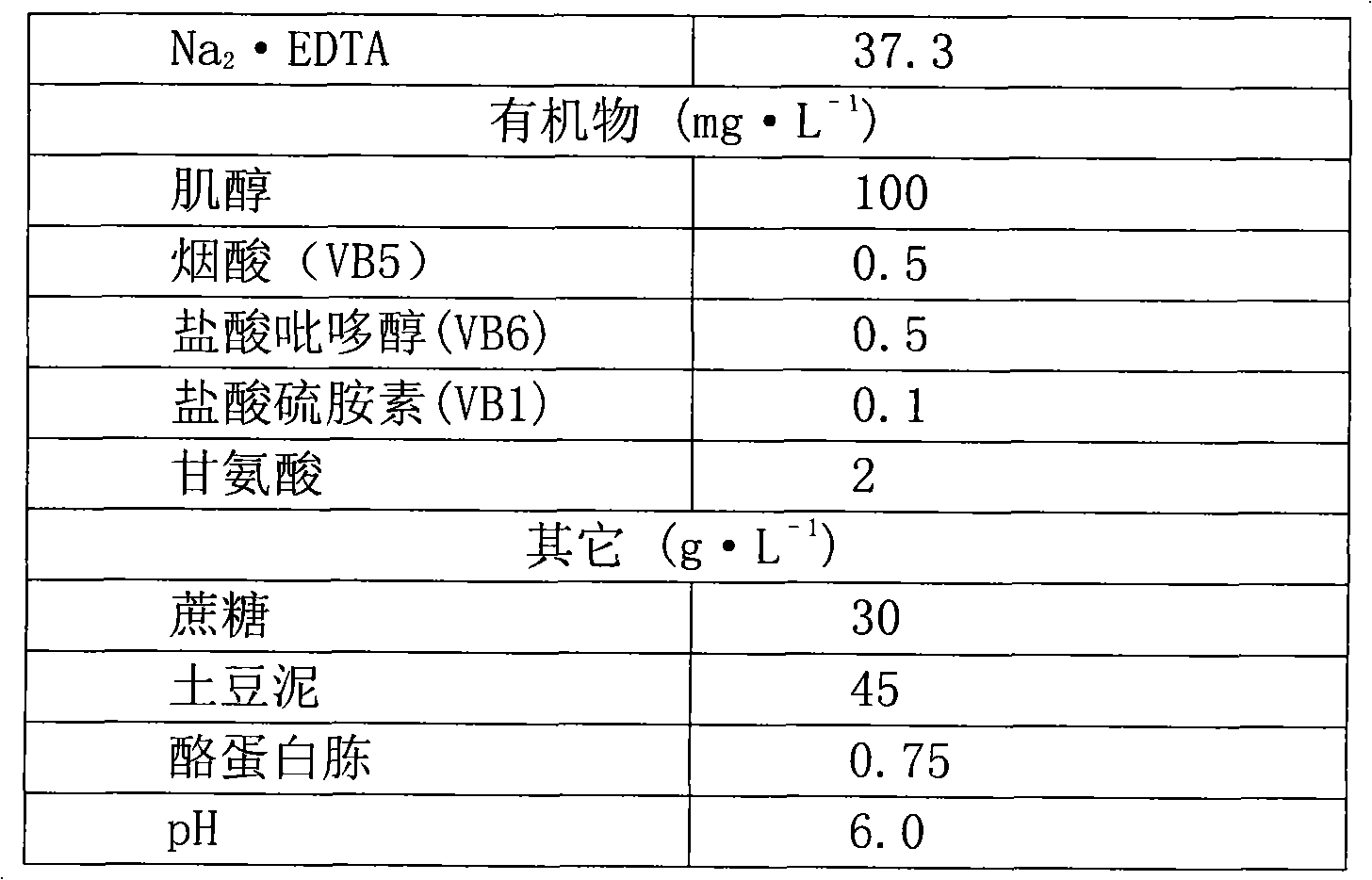Method for detecting seed viability of orchid plants
A technology for plant seeds and viability, applied to germination equipment and other directions, can solve the problems of long germination cycle, difficult germination, inability to quickly and effectively measure seed viability, etc., and achieve the effect of convenient operation and difficult observation.
- Summary
- Abstract
- Description
- Claims
- Application Information
AI Technical Summary
Problems solved by technology
Method used
Image
Examples
Embodiment 1、 5
[0023] Example 1, the optimization experiment of pretreatment of orchid orchid seeds and dyeing conditions
[0024] Experiment 1. Comparison of the dyeing effects of calcium hypochlorite treatment on the seeds of five lip orchids at different times
[0025] This experiment uses the Ca(ClO) of 5% mass percentage content 2 The solutions were pretreated for 15, 30, 60, 90, and 120 minutes respectively; 1% by mass of 2,3,5-triphenyltetrazolium chloride phosphate buffer solution at 30°C in the dark Dyeing for 24h. The specific method is as follows:
[0026] 1) Pretreatment: Take the fully mature seed pods of Penicillium chinensis, cut open the pericarp and take out the seeds with tweezers, place the seeds in five 2.0mL centrifuge tubes, each about 0.02g, and then add 5 %Ca(ClO) in mass percent 2 Solution (containing 0.8% Tween-20) 1.5mL, cover the lid of the centrifuge tube, and treat for 15, 30, 60, 90, 120min respectively, shake and mix 3-5 times during the period; Push it i...
Embodiment 2
[0054] Embodiment 2, the viability detection experiment of Dendrobium officinalis seed
[0055] This experiment adopts the Ca(ClO) of 5% mass percentage content 2 Seeds were pretreated with the solution for 30 minutes, and then stained with 1% 2,3,5-triphenyltetrazolium chloride phosphate buffer solution for 24 hours at 30°C and in the dark. The specific method is as follows:
[0056] 1) Pretreatment: Take the fully mature seed pods of Dendrobium bougainvillea, cut open the pericarp and take out the seeds with tweezers, place the seeds in a 2.0mL centrifuge tube, each about 0.02g, and then add 5% mass per cent to the centrifuge tube Content of Ca(ClO) 2 Solution (containing 0.8% Tween-20) 1.5mL, cover the lid of the centrifuge tube, treat for 30min, shake and mix 3-5 times during the period; push a small piece of sterile cotton ball into the centrifuge tube with tweezers Slowly push into the lower part of the centrifuge tube, tilt the bottom of the centrifuge tube upwards, ...
Embodiment 3
[0060] Embodiment 3, the viability detection experiment of Dendrobium officinalis seed
[0061] This experiment adopts the Ca(ClO) of 2.5% mass percentage content 2 Seeds were pretreated with the solution for 60 minutes, and then stained with 2% 2,3,5-triphenyltetrazolium chloride phosphate buffer solution for 12 hours at 25°C and in the dark. The specific method is as follows:
[0062] 1) Pretreatment: Take the fully mature seed pods of Dendrobium bougainvillea, cut open the pericarp and take out the seeds with tweezers, put the seeds in a 2.0mL centrifuge tube, about 0.02g per tube, and then add 2.5% mass per cent to the centrifuge tube Content of Ca(ClO) 2 Solution (containing 0.8% Tween-20) 1.5mL, cover the lid of the centrifuge tube, treat for 60min, shake and mix 3-5 times during the period; use tweezers to push a small piece of sterile cotton ball into the centrifuge tube, and the cotton ball Slowly push into the lower part of the centrifuge tube, tilt the bottom of ...
PUM
 Login to View More
Login to View More Abstract
Description
Claims
Application Information
 Login to View More
Login to View More - R&D
- Intellectual Property
- Life Sciences
- Materials
- Tech Scout
- Unparalleled Data Quality
- Higher Quality Content
- 60% Fewer Hallucinations
Browse by: Latest US Patents, China's latest patents, Technical Efficacy Thesaurus, Application Domain, Technology Topic, Popular Technical Reports.
© 2025 PatSnap. All rights reserved.Legal|Privacy policy|Modern Slavery Act Transparency Statement|Sitemap|About US| Contact US: help@patsnap.com


